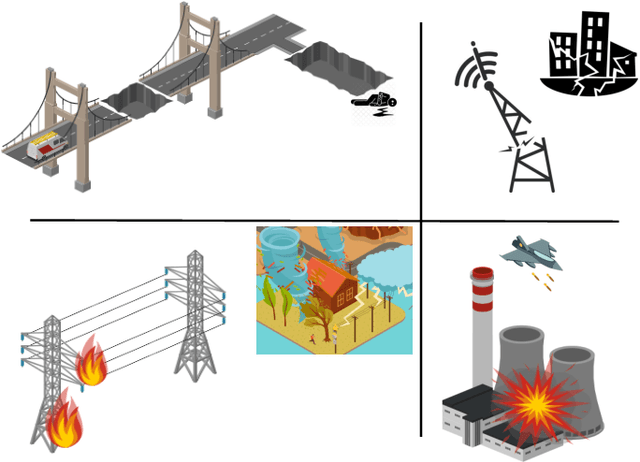Mustafa Kishk
Exploring the Impact of HAPS-RIS on UAV-based Networks: A Novel Architectural Approach
Sep 26, 2024



Abstract:In this paper, we propose a network architecture where two types of aerial infrastructures together with a ground station provide connectivity to a remote area. A high altitude platform station (HAPS) is equipped with reconfigurable intelligent surface (RIS), so-called HAPS-RIS, to be exploited to assist the unmanned aerial vehicle (UAV)-based wireless networks. A key challenge in such networks is the restricted number of UAVs, which limits full coverage and leaves some users unsupported. To tackle this issue, we propose a hierarchical bilevel optimization framework including a leader and a follower problem. The users served by HAPS-RIS are in a zone called HAPS-RIS zone and the users served by the UAVs are in another zone called UAV zone. In the leader problem, the goal is to establish the zone boundary that maximizes the number of users covered by HAPS-RIS while ensuring that users in this zone meet their rate requirements. This is achieved through an algorithm that integrates RIS clustering, subcarrier allocation, and zone determination. The follower problem focuses on minimizing the number of UAVs required, ensuring that the rate requirements of the users in the UAV zone are met. This is addressed using an algorithm that employs k-means clustering and subcarrier allocation. Our study reveals that increasing the number of RIS elements significantly decreases the number of required UAVs.
Five Key Enablers for Communication during and after Disasters
Sep 10, 2024



Abstract:Civilian communication during disasters such as earthquakes, floods, and military conflicts is crucial for saving lives. Nevertheless, several challenges exist during these circumstances such as the destruction of cellular communication and electricity infrastructure, lack of line of sight (LoS), and difficulty of localization under the rubble. In this article, we discuss key enablers that can boost communication during disasters, namely, satellite and aerial platforms, redundancy, silencing, and sustainable networks aided with wireless energy transfer (WET). The article also highlights how these solutions can be implemented in order to solve the failure of communication during disasters. Finally, it sheds light on unresolved challenges, as well as future research directions.
 Add to Chrome
Add to Chrome Add to Firefox
Add to Firefox Add to Edge
Add to Edge